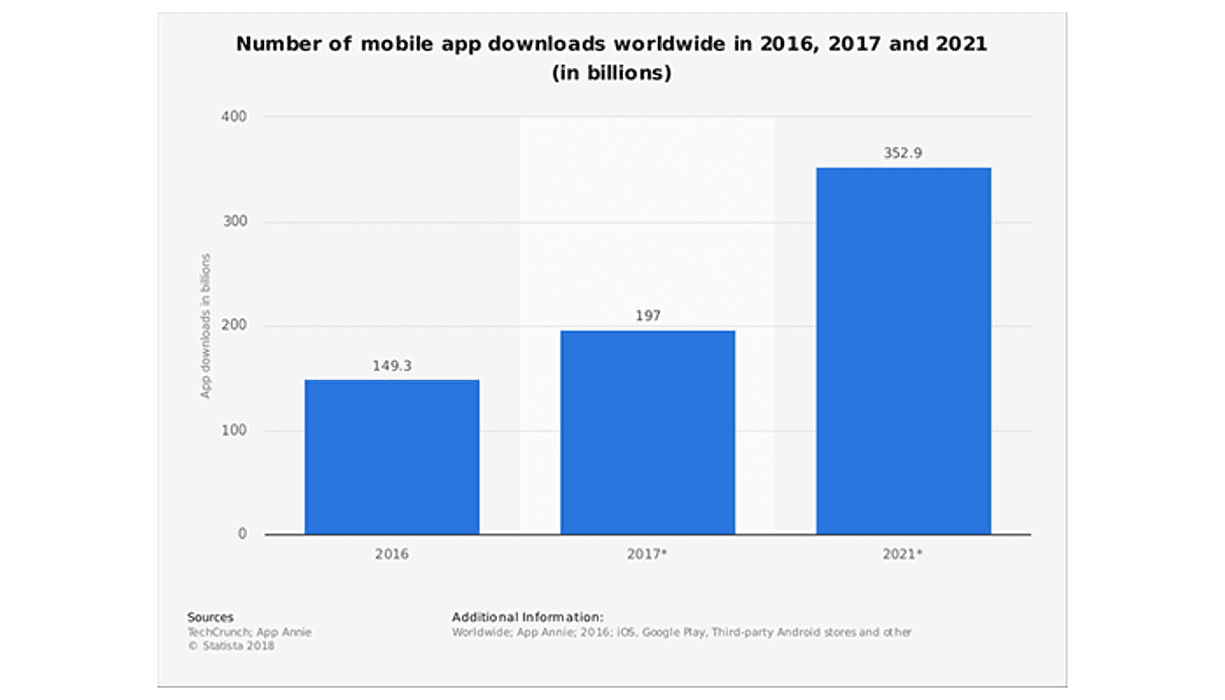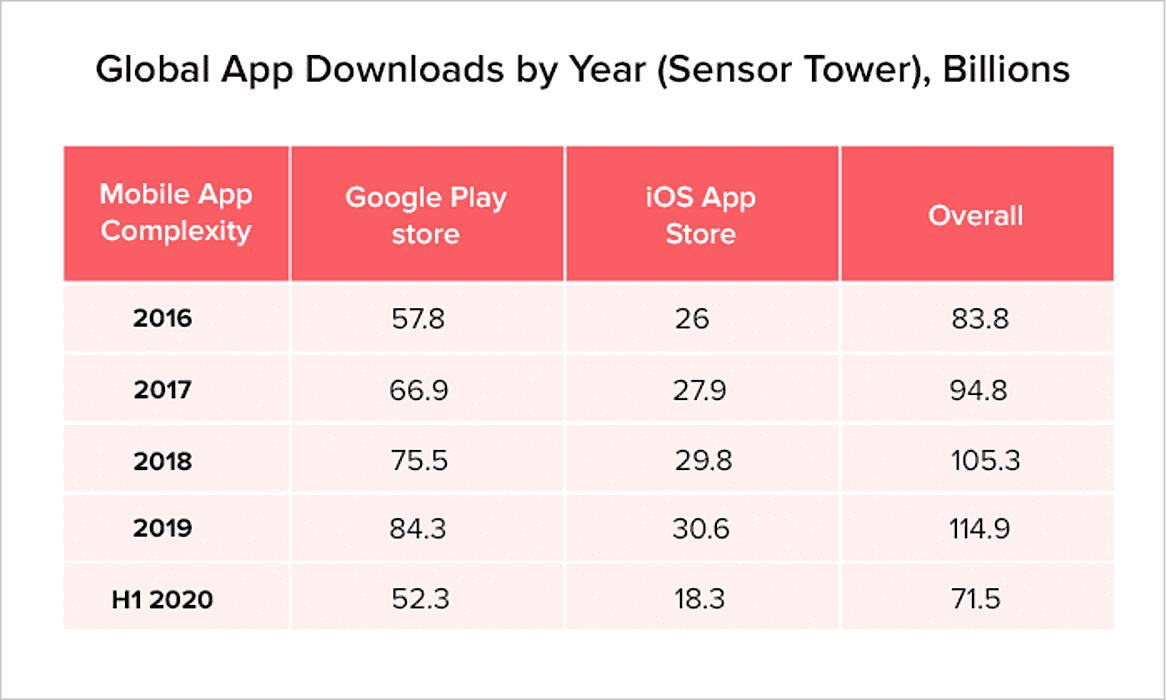
Budget is the foremost requirement for any operation and app development is no different. With the rapid advancement in the app industry and the advancement of technology, the app budget around the world is increasing and people are investing more and more in their app development projects. To develop a functioning app for your business you should set aside as much as budget as you can. Apps are a great tool to scale your business and investing early in a great app will be the first step towards stable future operations.
The budget for creating an app either makes or breaks your mobile or Web-based application projects. So in this article, we have decided to share some of the most effective ways to maximize your budget for mobile app development.
Maximize Your budget for making an app
Even though there are several active web and mobile application development companies around the world, the process of picking the right one can still be risky sometimes. Every company has a slight edge over the other and figuring out which app development company works the best for you to create an app, can be a little tricky.
As we are currently witnessing the level of interconnectivity and mobility in almost every industry vertical, the importance of apps in assisting our daily tasks has grown at an unprecedented level. If we look at the data released by Statista, the user preference towards mobile apps has increased at a rate of 71% and this trend seems to continue as shown in the graph below.

According to the mentioned statistics, it can also be stated that the total number of mobile application downloads are expected to double themselves in the span of the next two to three years.
Best Effective Ways To Maximize Your budget for creating an app
Here is the list of the most effective strategies that you need to consider in order to maximize your app development budget:
1. Set clear goals
First, have a clear vision about your app and research everything you need before you take on further steps. Ask the following questions:
- What do users expect from the product?
- Is there a great demand in the market?
- Will the product survive in competition?
- What value do you offer?
- What items are mandatory versus what will be “nice to get”?
These questions are related directly or indirectly to the digital product or service. One can also say that having a clear picture of what kind of app you want and for whom you are creating it, will drive you through the process will ease and help you get a refined and streamlined product.
Questions Related to clear goals
- Is there a mass-demand for users in the market?
- Is the business model worth the total cost to develop an app?
- Are there core product features that are easily identified in the early stages?
- Is the business proposition clear as well as easily explainable?
2. Determining the platform
There are three main choices for platform selection of mobile apps. The choice has a significant impact on the cost, vis-à-vis the development of the app leading to a few compromises. The three main choices are:
- Android
- iOS
- Hybrid platforms
Android and iOS-based apps are also called “native apps” as they are native to a particular operating system. Hybrid apps, on the other hand, can be used on both devices and hence are referred to as “cross-platform applications”. Here are a few insights regarding each platform.

Android platform to build an app
Android is the most used platform by the users and dominates market share. It dominates Asia, the middle-east and most of Latin America making it a good choice for those who are looking for a wider customer base and are looking for massive traction and usage. However, applying a monetization strategy to these developments is rather difficult because of various factors including customer’s capacity to spend.
Development of Android is relatively less expensive than iOS but more than hybrid apps. Submitting an app for approval is a two-hour process leading to a less stringent app review. App rejection rate is much less than that of Apple’s. However, ease of submission has resulted in a huge number of apps in Google app store leading to higher competition. There are more than 3 million apps on Play store and more than 84 billion downloads in the year 2019 only. This cluttering of the market raises the need for stringent marketing strategies by the app developers, to gain more traction and attention from the users.
iOS platform to build an app
iOS is the great choice of platform for those who are looking to dominate American and European markets where iOS is the dominant player. However, the process of submitting the app and getting it reviewed is more rigorous than other platforms and shows a much higher rejection rate. You need to be sure of the app store’s prerequisites and the functionalities your app can deliver within that regard. Approval may take up to 7 days and rejection will add significant time.
Nonetheless, iPhones are still one of the most popular devices and making nearly 40% of total smartphones in 2018. The completion is stiffer, in 2019, 30 billion iOS app downloads were made, making it a great market for quality products offering value and premium services to paying users.
Hybrid platforms to build an app
Hybrid is mixing the best of both the worlds but for some, it may result in the worst of both the worlds. It's important to understand what features hybrid platforms support and will they suffice your scalability needs in the future.
Hybrid platforms are simpler and usually cheaper than native platforms but offer a lot less functionality. Simply put, they are like mobile websites disguised as applications. They fail to utilise the full functionality of any platform and leads to slow or restricted user experience. However, they offer cross-functionality apps which are easy to develop and run, resulting in less app development budget.
3. Finding development partners
Finally, make a decision: how are you going to develop your app? Spending on your needs and goals, there are three options for you which will affect your mobile app budget and the final result
- In-house app development
In-house app development is the least expensive method as you make use of the resources at hand and develop the app yourself. It may be time taking and will require a lot of attention and research on your end. Your team may lack certain skills and you will end up making errors or compromises. However, if you are committed to the project, it may be a great learning experience and will reduce the cost.
- Hiring a freelancer
You can utilise your resources for doing the research design, planning, marketing, etc and hire freelancers for specific needs like coding the pp, deploying functionalities, customization, etc. This is also cost-efficient but affects the quality and commitment of the freelancer.
- Hiring an app development agency
Hire experts for what they are supposed to do that gives the best result. Yes, the method is most demanding financially but gives the best fruits, keeping all aspects into consideration. The scope of ever and rejection will reduce to zero, speeding up the process and avoiding all potential pitfalls.
4. Pay Attention to RFP Details
RFP also known as a Request for Proposal plays a very important part in the world of websites and mobile apps. It applies to people who know how to code and can develop a mobile application. A Request for Proposal (RFP) can be defined as a centralized document that consists of primary requirements and can be a vital tool in zeroing down an ideal mobile app budget. Some of the basic requirements mentioned in RFP are:
- Value Propositions
- Pre-defined Deadlines
- Business Needs
- Development Budget
Creating a Request for Proposal with clear understanding offers several benefits through the app development process. Some of the main advantages that an RFP provides are:
Advantages of Request For Proposal
- Well-formatted Information
- Helps in managing resources
- Can be used by Partners and Vendors
- Helps to streamline a process
5. Value of Check-ins & Milestones
In some of our previous articles, we have emphasized the role of check-ins and the importance of milestones in an app development project. As a client, you cannot just simply hire the first mobile app development company that you found online and expect it to deliver a high performing finished product within a few months. Ideally, you have to reach out to top app development companies, listen to their offers, follow their plans and take quotations on the budget for mobile app development, before you can decide which company will suit your needs.
This is a scenario that is much less likely to happen in real-life situations. But in reality, there are many check-ins and milestones required during the development procedure of an application that will also have an impact on the mobile app budget. Here are some of the terms in which milestones can be stated as:
- Calendar dates
- Percentage of Completion
- Deliverables
- Payments
6. Review all Documentation Work
The documentation and technical work both go hand-in-hand during the app development procedure. From the inception of the idea to successful mobile app launch, there is a lot of documentation which is involved in between. To successfully maintain your customized app development price, you also need to cover various sections that many entrepreneurs don't pay much importance like:
- Scope of the Project
- Request for Proposal (RFP)
- Software Documentation
When the mobile app development projects reach a stage of maturity they also require to have an SOW this stands for Statement Of Work. If you are someone who is working on an app development project for the very first time then you also have the option to look for SOW examples online. On a general basis, these are some of the points that are included in a Statement Of Work
Elements Found In Statement of Work
- Project Description
- Timeline Schedule
- Business Requirements
- Payments Schedule
- Technical Requirements
- Overall Budget
7. Know Technology Behind Development
To completely utilize technology, you need to know the fundamentals of the technology behind the process opted to develop an app. To understand how mobile technology works and get an idea of mobile app development cost you may face, you need to get your facts straight, this also includes knowing about things like:
- On what basis the app is being created?
- What is the general process of app submission?
- How will the user interact with the app?
- Is the overall app functionality relevant?
- Have you targeted the relevant audience with your app?
The main focus here should remain on the reasoning part about the process of developing an app and gauging both sides i.e. the advantages and disadvantages of your app development projection.
Apart from this, some other sections also hold equal importance and provide more information about how mobile apps work and what happens after the development process as these stages are vital in getting a clear idea of a budget for making an app. This includes sections like:
Other Sections To Consider
- Mobile app development pre-defined timelines
- User terms and conditions for the app
- Average development costs for elements
- Common steps for submitting a mobile app in app stores
Key Takeaways
- The download rate for mobile apps is increasing at an alarming speed.
- Knowing the technology fundamentals the overall procedure of the app development process.
- Request for Proposal plays a crucial role in the world of websites and mobile apps.
- There are many check-ins/milestones required such as Payments, Deliverables, details etc in a project.
- The documentation and technical work both go together during the development process.
- The Statement of Work includes points like budget, timeline, and description.
- Product validation is an ongoing process where some crucial questions are being answered.
- Choice of the platform has an impact on cost and functionality.
- Native apps may be higher on cost, offer more functionality rather than a hybrid which are cost-effective but rather simple.
- Development partners are crucial for keeping the cost low.
- In-house teams will be cost-effective but not efficient. Finding right partners may lead to fast, easy and fully functional apps in your budget.
- Once you are in sync with the development team, the flexibility factor increases automatically.
So these were some of the most effective ways to maximize your mobile development budget and reduce your average cost to build an app. Also, don’t forget to check out some of our other interesting articles like ‘Mobile App Development Trends That Will Take Over In 2020’ and ‘Mobile App UX Design: What To Do & What Not To.










